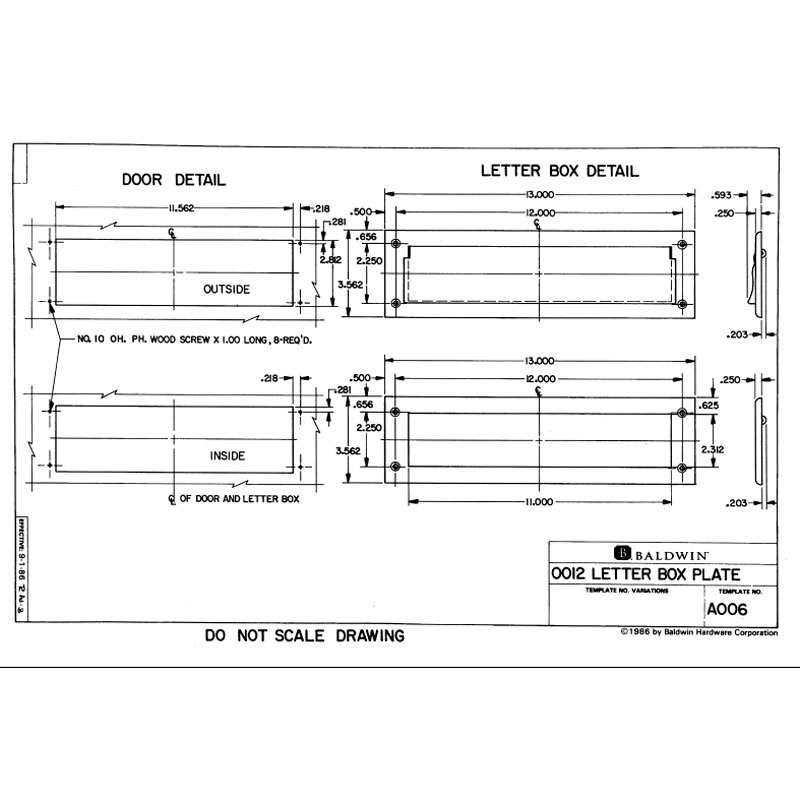Cabinetry is an essential part of any home decor, and the hardware on the cabinet is what makes it complete. One of the key tools for any cabinet installation project is a cabinet hardware template, which allows for precision and ease of installation.
Cabinet Hardware Template
 Using a cabinet hardware template makes installing handles and knobs a breeze. It helps in marking the positions of holes onto the door or drawer and ensures that the holes are level. Templates come in different configurations for different types of hardware, and their use can make cabinet installation less intimidating and more efficient.
Using a cabinet hardware template makes installing handles and knobs a breeze. It helps in marking the positions of holes onto the door or drawer and ensures that the holes are level. Templates come in different configurations for different types of hardware, and their use can make cabinet installation less intimidating and more efficient.
Types of Cabinet Hardware Templates
There are several types of cabinet hardware templates available, including:
- Knob and Pull Jig: This type of template is designed to drill holes for cabinet knobs and pulls. With this jig, you can make the necessary holes without any guesswork, and ensure that they are level and consistent across all doors and drawers.
- Drill Guide: This type of template is used to drill holes for concealed cabinet hinges. It allows you to set the drill bit at the precise angle required to create the necessary hole. This template comes in handy when the cabinet doors are already mounted.
- Adjustable Template: An adjustable template is designed to work with multiple hole configurations. This template is flexible and adjustable, so it can be used for various dimensions and setups.
How to Use a Cabinet Hardware Template
Using a cabinet hardware template is straightforward, and there are a few simple steps to follow:
- Clean the Cabinet Surface: Before installing any hardware, ensure that the surface is clean and free of any dust, debris, or grease. This will ensure a strong and long-lasting bond between the cabinet and the hardware.
- Position the Template: Set the template in position, taking care to ensure that it is level and flush against the edge of the door or drawer. Tape the template to the cabinet or use clamps to hold it in place.
- Mark the Hole Locations: Using a pencil or marker, mark the position of the holes on the cabinet. A cabinet hardware template typically has a series of markings or holes that indicate where the hole should be drilled. Marking the holes with the cabinet hardware template will help ensure that the holes are accurately positioned.
- Drill the Holes: Using a drill, drill holes through the cabinet at the marked locations. Be sure to use the correct drill bit size, as indicated by the template.
- Install the Hardware: Once the holes are drilled, it’s time to install the hardware. Place the handle or knob on the door or drawer, and insert screws through the holes you’ve drilled. Tighten the screws to secure the hardware in place.
Tips for Using a Cabinet Hardware Template
Using a cabinet hardware template is simple and straightforward, but there are a few tips and tricks that can make the process even easier.
- Measure Twice: Before marking the holes, double-check the position and measurements. This will help prevent any mistakes and ensure everything is in place before drilling.
- Use a Backing Board: To prevent tear-out when drilling, place a piece of scrap wood behind the door or drawer to provide support. This will help prevent any damage to the cabinet.
- Use the Right Bit: Using the correct sized drill bit is critical when making holes for cabinet hardware. Check the template or the hardware instructions for the correct drill bit size.
- Be Patient: Take your time when drilling holes for hardware. Rushing can lead to mistakes and damage to the cabinet, so be sure to work slowly and carefully.
Conclusion
Using a cabinet hardware template is an excellent way to ensure that your cabinet hardware is installed precisely and efficiently. With the help of a cabinet hardware template, you can be sure that your handles and knobs are level, evenly spaced, and properly aligned. Whether you’re a professional contractor or just a DIY enthusiast, a cabinet hardware template is an essential tool for any cabinet installation project.